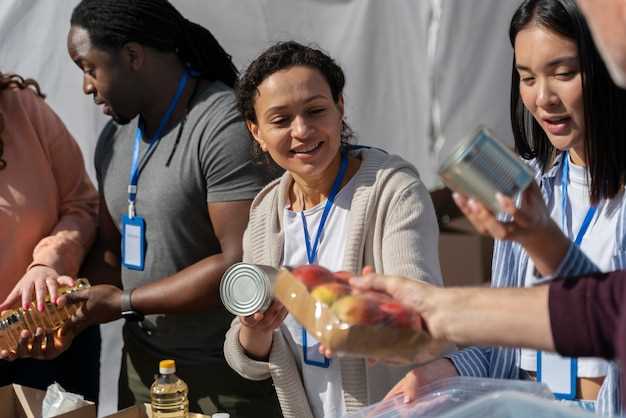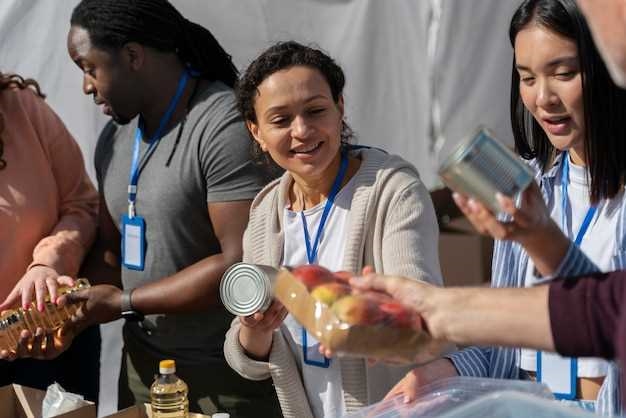
In today’s society, it is crucial to address the unique healthcare needs of vulnerable communities. These populations, often marginalized and disadvantaged, face numerous barriers when it comes to accessing quality healthcare services. However, through various initiatives and programs, efforts are being made to bridge this gap and promote the well-being of these individuals.
One key aspect of these initiatives is the emphasis on preventive care and health education. By empowering individuals with knowledge about healthy lifestyles and disease prevention, we can help them make informed decisions about their well-being. This includes promoting regular check-ups, screenings, and vaccinations, as well as providing resources for managing chronic conditions.
Another vital component of these healthcare initiatives is the focus on improving healthcare access in underserved areas. This involves establishing community health centers and mobile clinics, which bring healthcare services directly to the doorstep of those who need it the most. By eliminating geographical barriers and providing culturally sensitive care, these initiatives ensure that no one is left behind in receiving the healthcare they deserve.
Furthermore, these initiatives recognize the importance of addressing social determinants of health. Factors such as poverty, education, and housing significantly impact an individual’s well-being. By collaborating with community organizations and social services, healthcare initiatives aim to tackle these underlying issues and create a holistic approach to healthcare. This includes providing support for affordable housing, access to nutritious food, and educational opportunities to empower individuals and improve their overall health outcomes.
In conclusion, promoting the well-being of vulnerable communities requires a multifaceted approach that goes beyond traditional healthcare services. By focusing on preventive care, improving healthcare access, and addressing social determinants of health, these initiatives aim to create a more equitable healthcare system for all. Through these efforts, we can ensure that everyone, regardless of their background or circumstances, has the opportunity to lead a healthy and fulfilling life.
Addressing Healthcare Disparities: Strategies for Equality
In this section, we will explore various approaches and methods aimed at reducing disparities in healthcare access and outcomes. By implementing these strategies, we can work towards achieving equality in healthcare for all individuals, regardless of their background or circumstances.
1. Enhancing Healthcare Education and Awareness
One key strategy for addressing healthcare disparities is to improve education and awareness among vulnerable communities. This can involve providing accessible and culturally sensitive information about preventive care, disease management, and available healthcare resources. By empowering individuals with knowledge, we can help them make informed decisions about their health and seek appropriate care when needed.
2. Increasing Healthcare Accessibility
Another crucial aspect of promoting equality in healthcare is to enhance accessibility to healthcare services. This can be achieved by establishing community health centers, mobile clinics, and telemedicine programs in underserved areas. Additionally, implementing policies that ensure affordable healthcare coverage and reducing financial barriers can significantly improve access to care for vulnerable populations.
3. Culturally Competent Care
Addressing healthcare disparities also requires providing culturally competent care to individuals from diverse backgrounds. Healthcare providers should receive training on cultural sensitivity and understanding the unique needs and beliefs of different communities. By tailoring healthcare services to meet the cultural and linguistic preferences of patients, we can bridge the gap in healthcare disparities and improve health outcomes.
- Implementing interpreter services
- Offering multilingual healthcare materials
- Respecting cultural practices and beliefs
4. Collaborative Partnerships
To effectively address healthcare disparities, it is essential to establish collaborative partnerships between healthcare organizations, community leaders, and policymakers. By working together, these stakeholders can identify and address the specific needs of vulnerable communities, develop targeted interventions, and advocate for policy changes that promote equality in healthcare.
By implementing these strategies, we can take significant steps towards reducing healthcare disparities and ensuring that everyone has equal access to quality healthcare services.
Improving Access to Healthcare: Breaking Down Barriers
In this section, we will explore strategies aimed at enhancing the availability and reach of healthcare services, with a focus on overcoming obstacles that hinder individuals from obtaining the care they need. By addressing the various challenges that impede access to healthcare, we can ensure that vulnerable populations have equal opportunities to receive essential medical assistance.
Eliminating Obstacles: One of the key objectives in improving access to healthcare is identifying and eliminating the barriers that prevent individuals from seeking and receiving necessary medical attention. These barriers can manifest in different forms, such as geographical distance, financial constraints, cultural or language barriers, and lack of awareness about available healthcare resources. By addressing these obstacles, we can create a more inclusive healthcare system that caters to the needs of all individuals, regardless of their background or circumstances.
Expanding Healthcare Infrastructure: Another crucial aspect of breaking down barriers to healthcare access is the expansion of healthcare infrastructure. This involves increasing the number of healthcare facilities, particularly in underserved areas, and ensuring that these facilities are equipped with the necessary resources and personnel to provide quality care. Additionally, the development of telemedicine and mobile healthcare initiatives can help bridge the gap between healthcare providers and individuals who face challenges in accessing traditional healthcare settings.
Enhancing Health Literacy: Improving access to healthcare also requires addressing the issue of health literacy. Many individuals, especially those from vulnerable communities, may lack the necessary knowledge and understanding of healthcare practices, preventive measures, and available resources. By promoting health education and enhancing health literacy, we can empower individuals to make informed decisions about their health and seek appropriate healthcare services when needed.
Collaborative Partnerships: Breaking down barriers to healthcare access necessitates collaborative efforts between healthcare providers, community organizations, and government agencies. By fostering partnerships and collaborations, we can leverage resources, expertise, and networks to develop comprehensive healthcare initiatives that target the specific needs of vulnerable communities. These partnerships can also facilitate the implementation of outreach programs, health screenings, and awareness campaigns to ensure that individuals are aware of and have access to the healthcare services available to them.
Conclusion: Improving access to healthcare requires a multifaceted approach that addresses various barriers and challenges. By eliminating obstacles, expanding healthcare infrastructure, enhancing health literacy, and fostering collaborative partnerships, we can create a more equitable healthcare system that prioritizes the needs of vulnerable communities. Through these efforts, we can ensure that everyone has equal opportunities to receive the care they need to lead healthy and fulfilling lives.
Enhancing Preventive Care: Empowering Individuals for Better Health
In this section, we will explore strategies to improve preventive care and empower individuals to take charge of their own health. By focusing on proactive measures and education, we can enhance overall well-being and reduce the burden of illness.
Empowering through Education

One key aspect of enhancing preventive care is providing individuals with the knowledge and tools they need to make informed decisions about their health. By offering educational resources and promoting health literacy, we can empower individuals to understand the importance of preventive measures and take appropriate actions.
Promoting Proactive Measures
Another crucial element in enhancing preventive care is encouraging individuals to adopt proactive measures. This includes regular health screenings, vaccinations, and lifestyle modifications such as healthy eating and exercise. By promoting these proactive measures, we can prevent the onset of diseases and improve overall health outcomes.
Mental Health Support: Bridging the Gap in Marginalized Communities
In this section, we will explore the importance of providing adequate mental health support in vulnerable communities. We will delve into the challenges faced by individuals in these communities when it comes to accessing mental health services and the impact it has on their overall well-being. Additionally, we will discuss the initiatives and strategies that can be implemented to bridge the gap and ensure that mental health support is accessible to all.
The Need for Mental Health Support
Within marginalized communities, there exists a significant disparity in accessing mental health services. Individuals in these communities often face various barriers, such as limited financial resources, cultural stigmas, and lack of awareness about available resources. As a result, their mental health needs often go unaddressed, leading to further complications and a decline in overall quality of life.
Financial constraints play a crucial role in limiting access to mental health support. Many individuals in vulnerable communities struggle to afford the cost of therapy sessions, medication, or other necessary treatments. This financial burden can prevent them from seeking the help they need, exacerbating their mental health conditions and perpetuating a cycle of distress.
Cultural stigmas surrounding mental health also contribute to the gap in support. In some communities, mental health issues are still considered taboo or a sign of weakness. This stigma prevents individuals from seeking help, as they fear judgment or ostracization from their community. It is essential to address these cultural beliefs and promote a more inclusive and understanding environment for mental health discussions.
Initiatives to Bridge the Gap
Efforts to bridge the gap in mental health support for vulnerable communities are crucial to ensure equitable access to care. One initiative involves increasing awareness about available resources and destigmatizing mental health issues through community education programs. By providing accurate information and fostering open conversations, individuals in vulnerable communities can feel more comfortable seeking help and support.
Collaboration between healthcare providers, community organizations, and government agencies is another vital aspect of bridging the gap. By working together, these stakeholders can develop comprehensive strategies to address the specific needs of vulnerable communities. This may include establishing mental health clinics in underserved areas, providing free or low-cost services, and training culturally competent mental health professionals.
In conclusion, addressing the mental health support gap in vulnerable communities is crucial for promoting overall well-being and reducing disparities. By acknowledging the unique challenges faced by individuals in these communities and implementing targeted initiatives, we can bridge the gap and ensure that mental health support is accessible to all, regardless of their socioeconomic status or cultural background.
Promoting Healthy Lifestyles: Education and Awareness Programs
In this section, we will explore the importance of fostering healthy habits and behaviors through educational initiatives and raising awareness. By providing individuals with the knowledge and understanding of how to lead a healthy lifestyle, we can empower them to make informed choices that positively impact their well-being.
Through education and awareness programs, we aim to equip vulnerable communities with the tools and resources they need to prioritize their health and make sustainable lifestyle changes. These programs focus on various aspects of healthy living, including nutrition, physical activity, mental well-being, and preventive healthcare.
By promoting healthy lifestyles, we encourage individuals to adopt habits that contribute to their overall well-being. This includes teaching them about the importance of balanced diets, regular exercise, stress management techniques, and the benefits of preventive screenings and vaccinations.
Education and awareness programs also play a crucial role in addressing health disparities and inequalities within vulnerable communities. By providing accessible and culturally sensitive information, we can bridge the gap in healthcare knowledge and empower individuals to take control of their health.
Furthermore, these programs promote community engagement and collaboration, fostering a supportive environment where individuals can learn from and support one another. By creating a sense of community, we can inspire and motivate individuals to make positive changes in their lives.
In conclusion, promoting healthy lifestyles through education and awareness programs is essential for empowering vulnerable communities to take charge of their health. By equipping individuals with knowledge and resources, we can foster a culture of wellness and improve overall well-being within these communities.
Collaborative Efforts: Partnerships for Sustainable Healthcare Solutions
In the pursuit of promoting well-being and ensuring access to quality healthcare for all, it is crucial to foster collaborative efforts and establish partnerships that can lead to sustainable solutions. By joining forces and pooling resources, diverse stakeholders can work together to address the healthcare needs of vulnerable communities.
Through strategic alliances and cooperative endeavors, innovative approaches can be developed to tackle the challenges faced by underserved populations. These partnerships bring together healthcare providers, community organizations, government agencies, and other key players to create a comprehensive network of support.
By leveraging the expertise and resources of each partner, sustainable healthcare solutions can be designed and implemented. This collaborative approach allows for the identification of unique strengths and the sharing of best practices, leading to more effective and efficient healthcare initiatives.
Partnerships also play a crucial role in ensuring the long-term viability of healthcare programs. By combining financial resources, knowledge, and skills, stakeholders can establish sustainable models that can withstand the test of time. This not only ensures the continuity of healthcare services but also enables the development of innovative strategies to address emerging health issues.
Furthermore, partnerships foster a sense of ownership and empowerment within communities. By involving local organizations and community members in the decision-making process, healthcare initiatives become more tailored to the specific needs and cultural context of the population being served. This participatory approach enhances the effectiveness and sustainability of healthcare solutions.
In conclusion, collaborative efforts and partnerships are essential for creating sustainable healthcare solutions for vulnerable communities. By working together, diverse stakeholders can leverage their collective strengths and resources to address the unique challenges faced by underserved populations. Through these partnerships, innovative approaches can be developed, ensuring access to quality healthcare and promoting the overall well-being of vulnerable communities.



